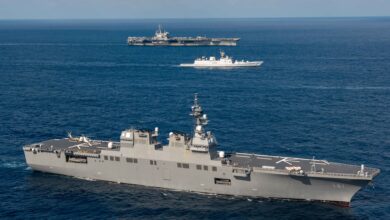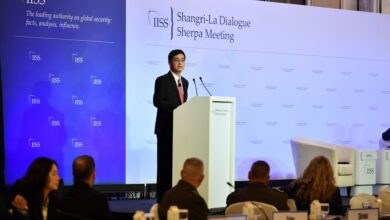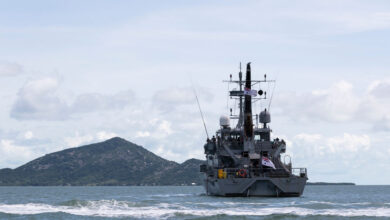China trying to go global with arms exports

Tom Abke
China is stepping up its efforts to become a global exporter of defense products, launching new aircraft built specifically for foreign markets, reported the official press office of China’s People’s Liberation Army.
Export versions of China’s latest attack and reconnaissance helicopter, the Harbin Z-19, pictured, and fighter jet JF-17 Thunder are being promoted in markets worldwide. Just how receptive markets are may depend on a range of factors, not all of which pertain to quality and features of the aircraft.
One of its designers, Li Shingwei, said the Z19E (E for export) is a showpiece of breakthrough technology that offers excellent value and could be considered a competitor to the American-made Bell AH-1 Cobra. The JF-17B, also made for export, is considered a trainer version of the JF-17, a fighter jet whose capabilities and performance the Chinese compare to the American F-16. Orders for the JF-17B were being placed by Pakistan while the fighter jet was still in production, the PLA has claimed.
Customers for the new Chinese aircraft may be fewer than China hopes, however, according to Mark Cozad, senior China analyst at the Rand Corp..
“They actually fall mostly in a relatively small grouping of countries,” Cozad said. “So, you’re looking at relationships in Africa: Nigeria, I believe Tanzania, Algeria, Sudan. And then as you look in South Asia and Southeast Asia, you’re looking at Thailand, Burma, Cambodia; Pakistan really being the big market.”
Cozad added that the new aircraft join a family of older aviation vessels that China has been marketing abroad for several years, including the FC-20, a lightweight fighter jet comparable to Russia’s MiG-29, and the FC-1, a combat version of the JF-17B.
“We’ve seen discussions with Bangladesh for the FC-20,” Cozad said, “and then we’ve also seen historically the relationship between China and Pakistan with the FC-1 and the co-production agreement with the FC-17.”
The FC-17 is a version of the FC-1 built in Pakistan under license from China.
The markets where China is finding success are not very large, relative to the major markets for comparable aircraft, Cozad explained, adding that they haven’t yet achieved the reputation of some of their better-known competitors.
“There’s still an element of risk,” Cozad said. “Not a lot of countries are necessarily going to step up to be the first for that type of an item, even if sells for a lower price than what you’ll pay if your nation goes out and tries to buy the Euro fighter or U.S. fighter or something along those lines.”
The threats facing such countries as Bangladesh that call for fighter jets or even attack helicopters are also limited, he said, adding that purchases by these lower-tier markets tend to be “prestige” and limited in number, “probably no more than a dozen.”
Packaging the aircraft with value-added technology such as an active electronically scanned radar the Chinese are now marketing in their more advanced aircraft could enhance their marketability, he added.
Cozad concluded on a cautionary note, indicating that China is willing to sell to countries in regional hot spots.
“They’re countries who have security problems that tend to create strategic concern for the United States,” he said.
Tom Abke is a FORUM contributor based in Singapore.




